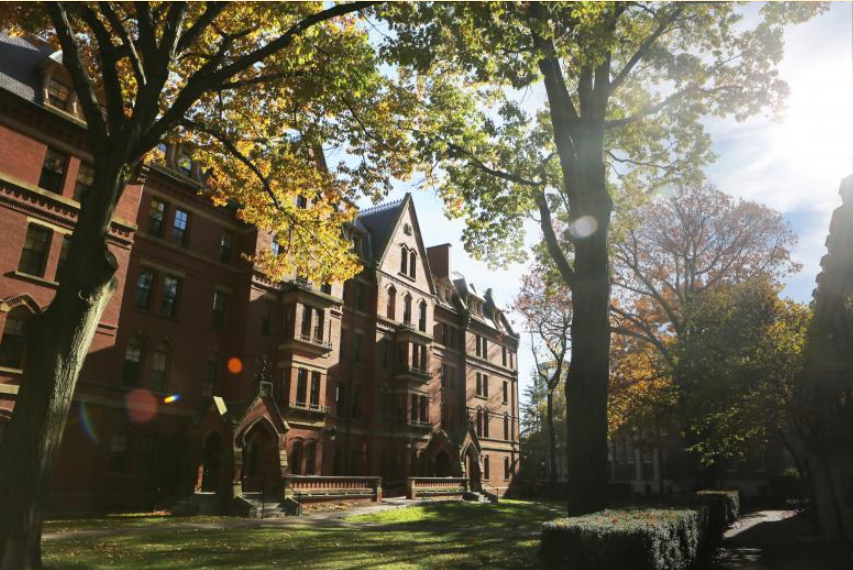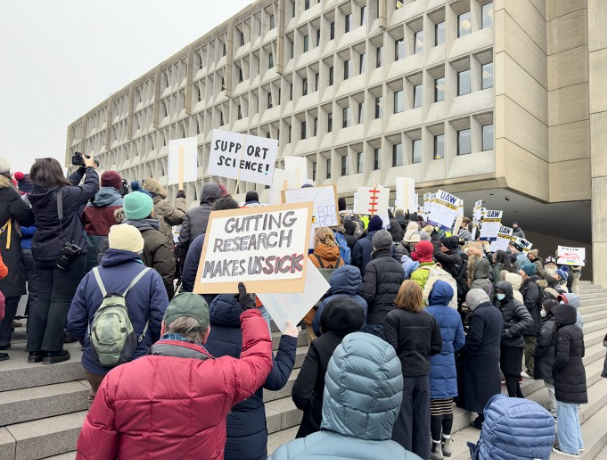With an endowment of $53.2 billion, Harvard is the world’s richest university. It is also a private institution, which is why it may be surprising that the university receives public funding. This funding is the result of Harvard serving the public by putting money into research in a variety of fields, most notably medicine. However, Harvard’s funding is at risk.
On April 11, 2025, three senior Trump Administration officials sent a letter to Harvard University declaring that if it wishes to continue to receive federal public funding, it must comply with a series of reforms largely centered around the goal of reducing antisemitism on campus. Harvard responded with multiple letters written by Alan Garber, Harvard’s President, and another letter directly to the Trump Administration’s officials informing them of the legal complaint Harvard had filed in the U.S. District Court of Massachusetts.
Despite its large endowment, the retraction of the U.S. Government’s financial support—which equates to about $2.2 billion—would force Harvard to make budget cuts that would significantly hinder research and financial aid. Approximately 80 percent of its endowment has already been budgeted for scholarships, aid, faculty chairs and academic programs. The other 20 percent is intended to be put toward helping Harvard sustain itself in the future. Currently, Harvard only makes a slight profit due to the university’s high spending. Harvard could choose to use its endowment to substitute any lost funds, but generally dipping into the body of a college’s endowment at all is considered to be one of the last resorts.
According to Harvard, the consequences of losing their funding would be widespread, potentially involving a reduction in research for treating and possibly curing diseases like cancer, Parkinson’s, Alzheimer’s, multiple sclerosis and heart disease. Investigations into how to ease the pain of battlefield soldiers could be stopped. Research into predicting future pandemics would be at risk. On a larger scale, it could undermine research on innovations used to improve American public health and damage the U.S.’s position as a world power.
The federal government’s letter to Harvard argues that because their federal funding acts as an investment into future research, Harvard is not entitled to it unless it meets the administration’s standards. Specifically, the letter addresses conditions relating to civil rights and intellectual innovation. To resolve these shortcomings, the administration outlined what changes Harvard could make to continue receiving their monetary support.
The first proposed reform focuses on the power structure of students and faculty in the college. It asks Harvard to make its governance more centralized and take power away from both untenured faculty and faculty focused on activism.
The second, third, and seventh focus on the dismantling of diversity, equity and inclusion (DEI) initiatives. They say that hiring and admissions should be exclusively merit-based and that any DEI speech or disciplinary policies must be discontinued. It also requires that all hiring and admissions data be shared with the federal government and demographic based statistical data be shared with the public.
The purpose of the fourth reform is to tighten restrictions on the admission of international students. It compels Harvard to increase screening for prospective international students to prevent admission of students that support terrorism or anti-Zionism. It also requires prospective students not be antagonistic towards “American Values” or institutions in the U.S. Constitution or Declaration of Independence. Additionally, the Trump Administration has more recently moved to take away Harvard’s ability to enroll international students altogether.
While in general some reforms seek to reduce diversity, the fifth reform seeks to increase “viewpoint diversity.” An external organization, chosen by Harvard and approved by the Trump Administration, would audit Harvard to ensure that its student body and faculty were representative of a variety of perspectives. They would also ensure that Harvard adjusts hiring and admissions to meet these requirements. More than three-fourths of Harvard’s faculty currently have a liberal political viewpoint, and 90 percent of Harvard’s class of 2024 disapproved of President Trump.
The sixth reform targets specific programs with a history of bias, requiring them to be audited for antisemitism and to be complicit in initiatives to reduce its prevalence. The eighth addresses discipline with the goal of reducing disruptions. They ask Harvard to pull support for a variety of pro-Palestinian student organizations with the cited reason being antisemitism. They also require a mask ban. Additionally, the Trump Administration addresses past incidents of antisemitism such as the Oct. 18 assault of an Israeli Harvard student.
The ninth reform gives any Harvard affiliate the ability to report noncompliance with the reforms and protects them. The 10th is about transparency. It states that Harvard should submit an accurate report with information about how the reforms are being implemented and affecting the university. It also sets the expectation of full disclosure when it comes to where their funds come from and how they are spent. Additionally, it requires that Harvard report all information pertaining to immigration to the Department of Homeland Security.
The Trump Administration’s claims of antisemitism seem to originate from pro-Palestinian protests, some of which have been aggressive toward Jews and Israelis. Since the Oct. 7 Hamas-led attack on Israel, the number of pro-Palestinian protests on campuses across the U.S. have exploded. Many of these protests were at Harvard.
In response to rising tensions on campus, Garber created two presidential task forces: one to write a report on how to combat antisemitism and anti-Israeli bias, and another to write a report on how to combat anti-Muslim, anti-Arab and anti-Palestininan bias. Recommendations by the task forces on how to address their respective issues have been or will be implemented. Despite these steps, it is evident because of the reforms that the Trump Administration sees Harvard’s response as inadequate.
Harvard is not the only elite university for which funding was targeted; it is just the latest on a growing list. Cornell, Northwestern, Brown, University of Pennsylvania, Princeton and Columbia have also had funding pulled. The results of Harvard’s lawsuit against the Trump Administration may have widespread implications for the circumstances of other schools.
With the decreased college funding and proposed reforms, it seems that Trump wishes to exercise a greater amount of control over these universities. However, he struggles with approval from the college educated demographic. In the 2024 election, 55 percent of college educated voters cast their ballot for Kamala Harris and only 42 percent for Trump. Institutions of higher education also tend to be centers for liberal and leftist values that oppose many of Trump’s policies.
The legal basis of the lawsuit against Trump is found primarily in the First Amendment. Harvard argues that in its proposed reforms, the federal government requires Harvard to surrender rights guaranteed by the First Amendment to receive funding. They also argue that the administration is going around conventional legal avenues for pulling monetary support and that Trump’s actions are governmental overreach.









